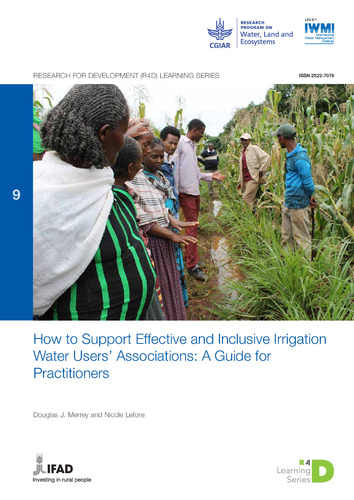How to support effective and inclusive irrigation water users’ associations: a guide for practitioners
Abstract
The purpose of this Guide is to provide an overview of the major considerations and steps to be followed in organizing new irrigation farmers’ organizations or Irrigation Water Users’ Associations (IWUAs). The Guide should support developing or strengthening a specialized formal IWUA for implementing a program aimed at creating or improving a collectively managed irrigation scheme. The Guide is focused on programs involving construction of new irrigation schemes; rehabilitation, modernization or revitalization of existing irrigation schemes; or supporting farmers wishing to improve the performance of their irrigation scheme. While based on extensive research and evidence, the intended audience for this Guide is the set of practitioners responsible for planning and implementing communal irrigation programs. This may include managers of publicly or externally supported projects, government agricultural and irrigation officials, private investments and nongovernmental organizations.
The Guide draws on over 50 years of experience organizing farmers to participate in the creation, improvement and management of both farmer-managed and government-managed irrigation schemes. The major lesson learned is that investing in the “software” component – training and institutional development – of irrigation is critical for success. If the IWUA is weak or ineffective, the scheme will fail to achieve its potential, no matter how good the hardware is.
The Guide seeks to avoid imposing a specific organizational design for what an institution should look like and do, but suggests a process organized around six ‘steps’ to be followed, more or less in sequence. Using these steps creatively as a guideline, not as a recipe to be followed precisely, will increase the likelihood that irrigation investments achieve the desired project goals.

